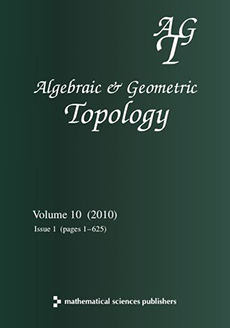Abstract
In [‘Formal (non)commutative symplectic geometry’, The Gelfand Mathematical Seminars (1990–1992) 173–187, and ‘Feynman diagrams and low-dimensional topology’, First European Congress of Mathematics, Vol. II Paris (1992) 97–121] M Kontsevich introduced graph homology as a tool to compute the homology of three infinite dimensional Lie algebras, associated to the three operads ‘commutative,’ ‘associative’ and ‘Lie.’ We generalize his theorem to all cyclic operads, in the process giving a more careful treatment of the construction than in Kontsevich’s original papers. We also give a more explicit treatment of the isomorphisms of graph homologies with the homology of moduli space and outlined by Kontsevich. In [‘Infinitesimal operations on chain complexes of graphs’, Mathematische Annalen, 327 (2003) 545–573] we defined a Lie bracket and cobracket on the commutative graph complex, which was extended in [James Conant, ‘Fusion and fission in graph complexes’, Pac. J. 209 (2003), 219–230] to the case of all cyclic operads. These operations form a Lie bi-algebra on a natural subcomplex. We show that in the associative and Lie cases the subcomplex on which the bi-algebra structure exists carries all of the homology, and we explain why the subcomplex in the commutative case does not.
Citation
James Conant. Karen Vogtmann. "On a theorem of Kontsevich." Algebr. Geom. Topol. 3 (2) 1167 - 1224, 2003. https://doi.org/10.2140/agt.2003.3.1167
Information





